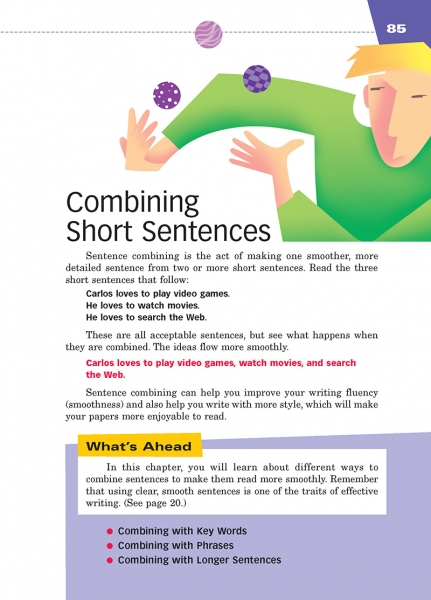Page 085 from

Start-Up Activity
Bring a grocery bag to school, along with a few items that fit in it. Hand out the items, asking students to bring them to your car. Then, think better of it, and go collect the items, having the students put them into a single grocery bag.
Tell students what you've done is take a bunch of separate but related things and put them into one parcel that you can grab hold of. Combining sentences is very similar. You take a bunch of related things and put them in the same "bag" so that readers can grab hold of them. This chapter will give them many strategies to do so.
Think About It
“Vigorous writing is concise. A sentence should contain no unnecessary words, a paragraph no unnecessary sentences, for the same reason that a drawing should have no unnecessary lines and a machine no unnecessary parts.”
—William Strunk, Jr.

Start-Up Activity
Bring a grocery bag to school, along with a few items that fit in it. Hand out the items, asking students to bring them to your car. Then, think better of it, and go collect the items, having the students put them into a single grocery bag.
Tell students what you've done is take a bunch of separate but related things and put them into one parcel that you can grab hold of. Combining sentences is very similar. You take a bunch of related things and put them in the same "bag" so that readers can grab hold of them. This chapter will give them many strategies to do so.
Think About It
“Vigorous writing is concise. A sentence should contain no unnecessary words, a paragraph no unnecessary sentences, for the same reason that a drawing should have no unnecessary lines and a machine no unnecessary parts.”
—William Strunk, Jr.
